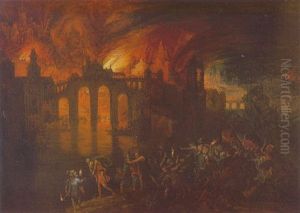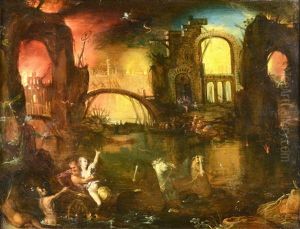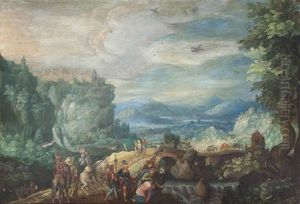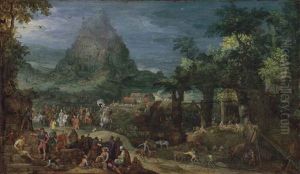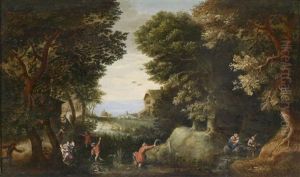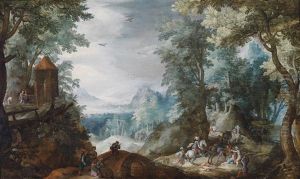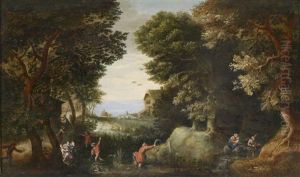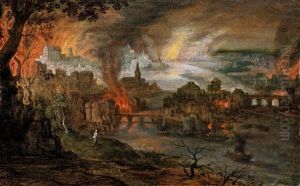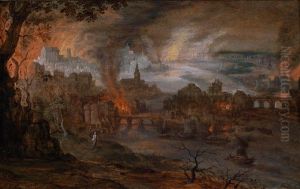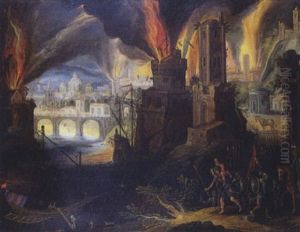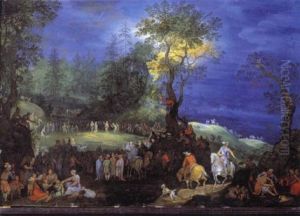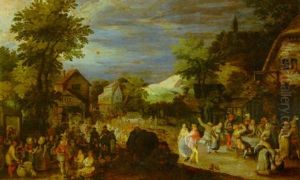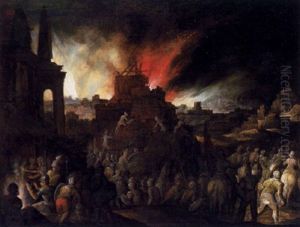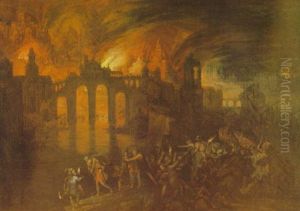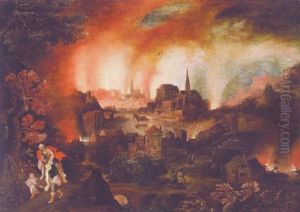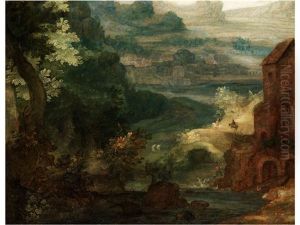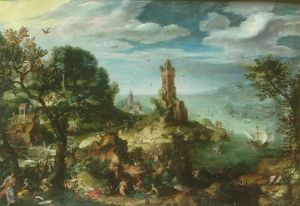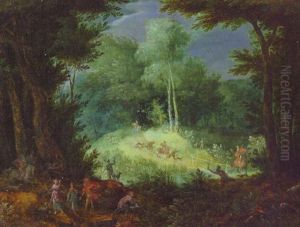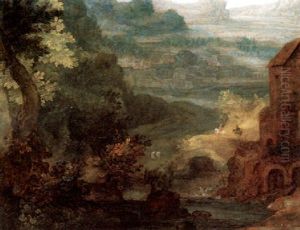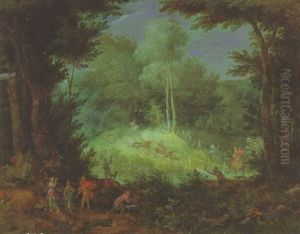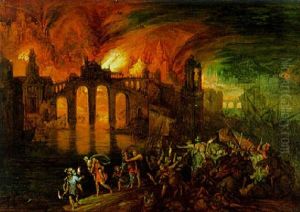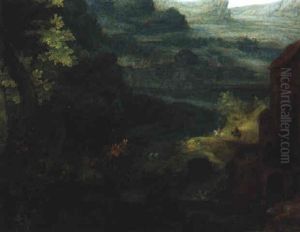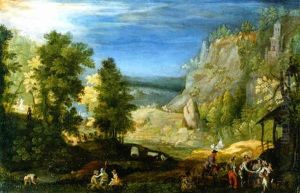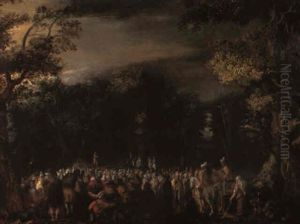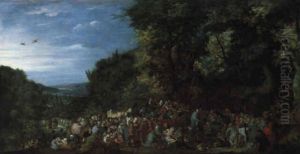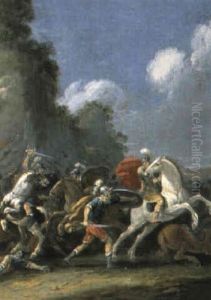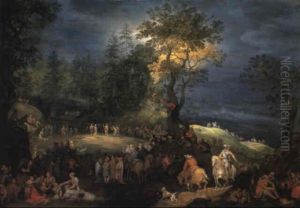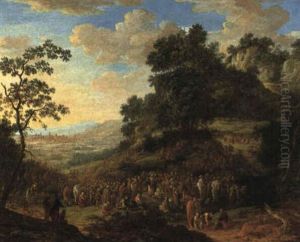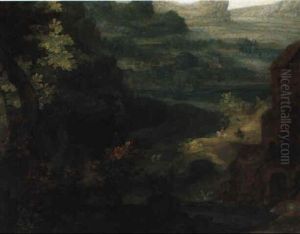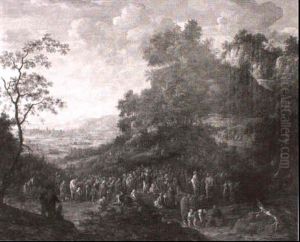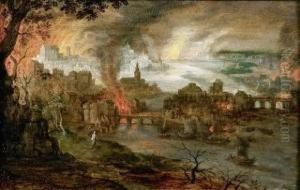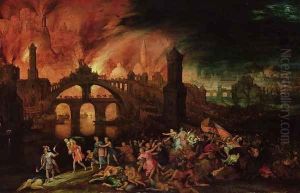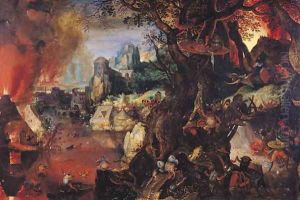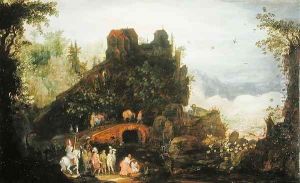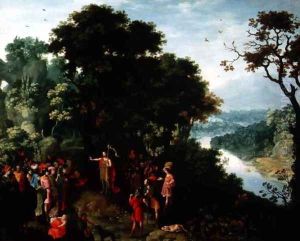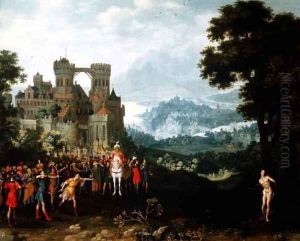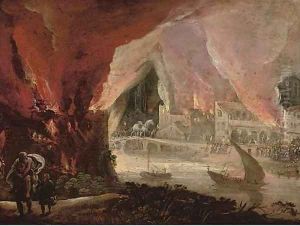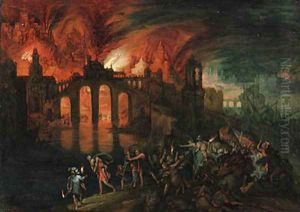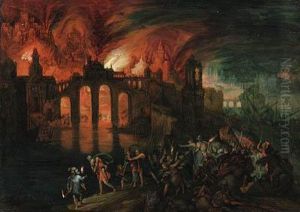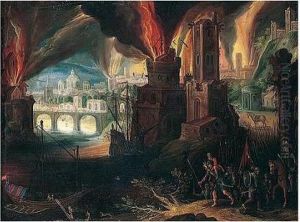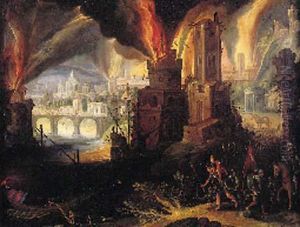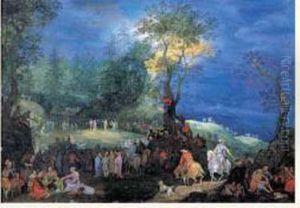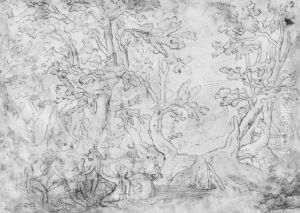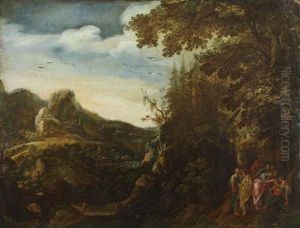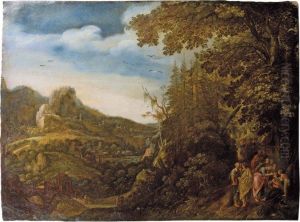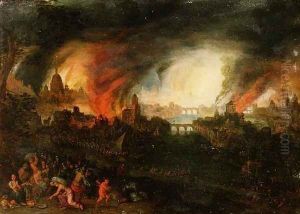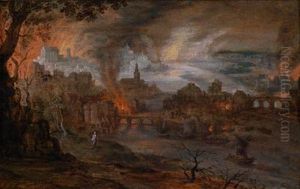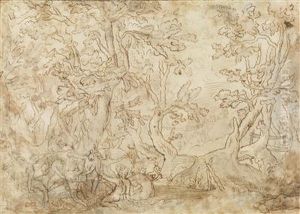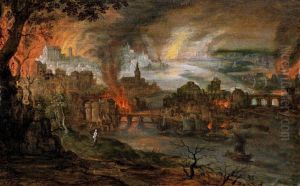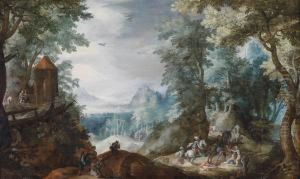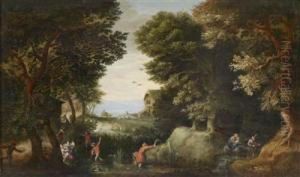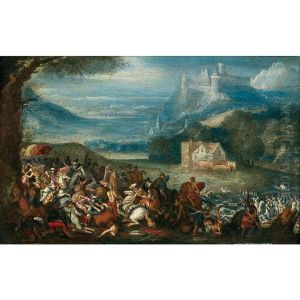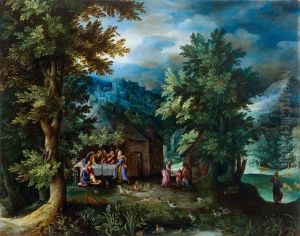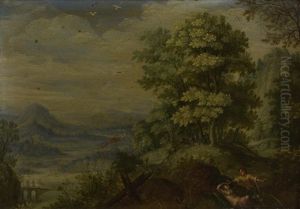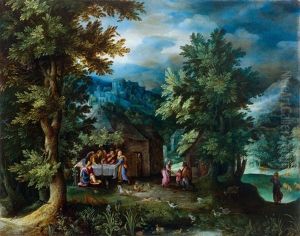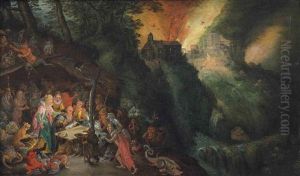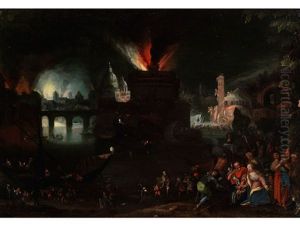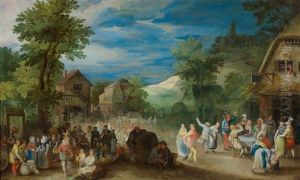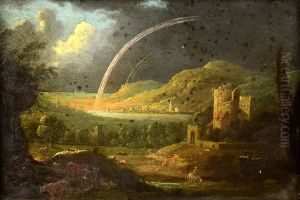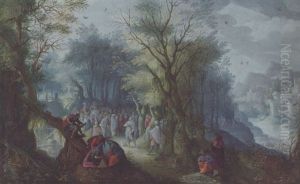Pieter Schoubroeck Paintings
Pieter Schoubroeck, also known as Pieter van Schoubroeck, was a Flemish landscape painter born in 1570 in Antwerp, then part of the Spanish Netherlands. Little is known about his early life, but it is believed that he was a pupil of the prominent landscape painter Gillis van Coninxloo, who was a major figure in the development of the Dutch landscape tradition and a proponent of the Mannerist style.
Schoubroeck is known for his small-scale landscapes that often incorporate biblical or mythological scenes. His work is characterized by a meticulous approach to detail and a strong emphasis on naturalistic elements, which was a significant departure from the more stylized landscapes of earlier generations. He was part of a group of artists known as the 'Frankenthal School' because he spent a significant portion of his career in Frankenthal, a town in the Palatinate region of Germany, to which he had moved by 1590. The Frankenthal School was known for its small, detailed, and often panoramic landscapes that reflected the influence of Northern Mannerism.
Schoubroeck's paintings often feature rocky terrains, elaborate trees, and atmospheric effects, showcasing his fascination with the natural world. His works were innovative for their time due to the introduction of expansive views and his use of color to create depth and atmosphere. Despite his contributions to the landscape genre, Schoubroeck did not achieve widespread recognition during his lifetime.
The Thirty Years' War, which began in 1618, devastated the region where Schoubroeck worked, and as a result, much of his artistic output may have been lost or destroyed. Schoubroeck's life and career were cut short when he died in 1607. Today, his surviving works are held in various collections and museums, and he is recognized as a noteworthy figure in the transition from Mannerist to more naturalistic landscape painting in Northern Europe. However, due to the scarcity of biographical details and surviving works, Schoubroeck remains a relatively obscure figure in art history.
